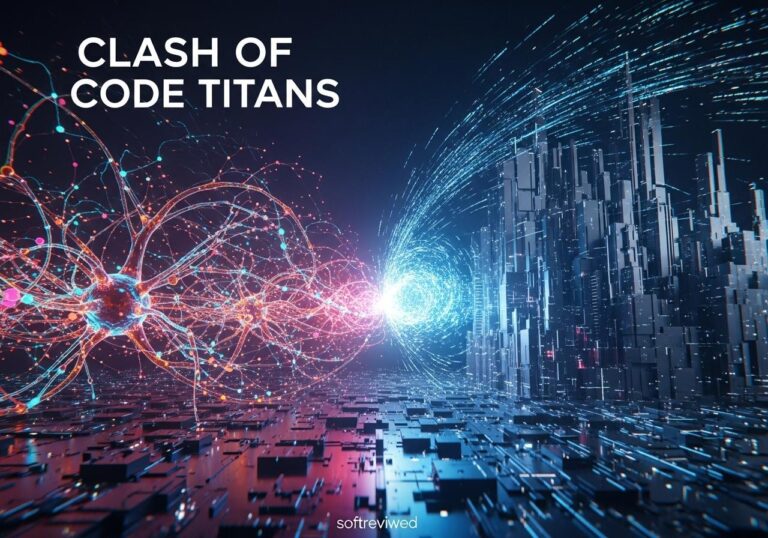Meta Llama Guard 2: Advanced AI Safety Classifier
Meta’s latest safety model delivers enhanced multimodal content moderation capabilities for responsible AI deployment.
🔍 Natively Multimodal Safety Classifier
Handles text, images, and mixed inputs/output to classify unsafe content – a significant advancement over text-only predecessors. Provides comprehensive content moderation across different media types.
⚙️ 12B Parameter Dense Architecture
Pruned from Llama 4 Scout, this efficient model runs on a single GPU with 24GB VRAM, making advanced safety tools more accessible to developers and organizations with standard hardware.
🛡️ Integrated Signals & Filters
Detects unsafe content in both prompts (user inputs) and responses (LLM outputs), creating a dual-layer protection system that monitors the entire conversation flow for potential risks.
🌐 Multiple Language Support
Classifies unsafe content in English and other languages covered by prior models, extending safety protections across linguistic boundaries for global AI applications.
📋 MLCommons Hazards Alignment
Designed for standardized safety categories, including harmful content and privacy/IP risks, helping establish consistent safety standards across the AI industry.
🔌 Meta API Integration
Directly supports Llama 4’s text and image moderation workflows via Llama Moderations API, making implementation straightforward for developers already using Meta’s ecosystem.
Llama Guard 4: Fortifying the Defenses of AI Safety 🛡️
The rapid proliferation of large language models (LLMs) has unlocked unprecedented capabilities, but it has also introduced significant risks related to harmful or inappropriate content generation. To address these challenges, Hugging Face has released Llama Guard 4, a cutting-edge safety tool designed to enhance the responsible development and deployment of AI systems. Llama Guard 4 is a pivotal tool in the world of AI safety, offering enhanced safety and security for Large Language Models.
Navigating the AI Safety Landscape with Llama Guard 4

As AI models become increasingly powerful, the need for robust safety mechanisms is more critical than ever. Llama Guard 4 provides a sophisticated approach to identifying and mitigating potential risks associated with LLMs, helping developers and organizations build safer, more reliable AI applications. This article explores the core features, technical architecture, real-world applications, and future implications of Llama Guard 4 in the ever-evolving world of AI safety.
What is Llama Guard 4 and Why Does it Matter? 🤔
Llama Guard 4 is a content moderation tool designed to classify whether the input and output of a Large Language Model (LLM) violates specific safety policies. It's essentially an AI system that helps ensure other AI systems behave responsibly. Why is this important? Because LLMs can sometimes generate content that is harmful, biased, or otherwise inappropriate. Llama Guard 4 acts as a safety net, helping to prevent these issues.
The Evolution of Llama Guard: From Version 1 to Version 4
Llama Guard has evolved significantly since its initial release. Each iteration has brought improvements in performance, coverage, and ease of use. Llama Guard 4 represents the latest advancements in content moderation technology. The evolution showcases a commitment to keeping up with the ever-growing capabilities, and potential dangers, of Large Language Models.
How Llama Guard 4 Safeguards Against Risky AI Content 🤖
Llama Guard 4 safeguards against risky content by classifying both the prompts given to the LLM (the input) and the responses generated by the LLM (the output). It checks these against predefined safety policies, flagging any content that violates those policies. This dual-pronged approach helps ensure that the LLM is not only receiving safe instructions but is also producing safe content.
Deconstructing the Technical Architecture of Llama Guard 4
Understanding the technical architecture of Llama Guard 4 can give you insight into how it works and what makes it so effective.
Understanding the Input-Output Structure
Llama Guard 4 takes text as input, whether it's a prompt or a generated response. It then analyzes this text and outputs a classification indicating whether the content is safe or violates a specific policy. This classification is based on a set of predefined safety categories. The input consists of user prompts and LLM generated responses, while the output is a safety risk assessment.
Key Improvements and New Features in Version 4
Llama Guard 4 brings several key improvements over previous versions, making it a more powerful and versatile tool.
Enhanced Context Understanding
One of the most significant improvements is its enhanced ability to understand the context of the text it's analyzing. This means it can better distinguish between harmful and harmless uses of similar phrases or concepts.
Expanded Coverage of Safety Domains
Llama Guard 4 covers a broader range of safety domains, including hate speech, violence, and other types of harmful content. This expanded coverage makes it more effective at identifying and mitigating a wider variety of risks.
Improved Performance and Reduced False Positives
Thanks to advancements in its underlying algorithms, Llama Guard 4 offers improved performance and a reduction in false positives, meaning it's more accurate and less likely to flag harmless content as unsafe.
Llama Guard 4 in Action: Use Cases and Real-World Applications
Llama Guard 4 can be applied in a variety of real-world scenarios to enhance the safety and responsibility of LLMs.
Protecting LLMs from Prompt Injection Attacks
Prompt injection attacks are a growing concern, where malicious actors attempt to manipulate LLMs by injecting harmful instructions into their prompts. Llama Guard 4 can help protect against these attacks by identifying and blocking prompts that contain malicious content.
Moderating Generated Content for Bias and Toxicity
LLMs can sometimes generate content that is biased or toxic, reflecting the biases present in their training data. Llama Guard 4 can be used to moderate generated content, flagging and filtering out any responses that are deemed inappropriate.
Ensuring Compliance with AI Safety Guidelines
Many organizations are developing AI safety guidelines to ensure their AI systems are used responsibly. Llama Guard 4 can help enforce these guidelines by automatically checking content against predefined safety policies.
The Impact of Llama Guard 4 on Responsible AI Development 💡
Llama Guard 4 has the potential to significantly impact the development of responsible AI systems.
Empowering Developers to Build Safer AI Systems
By providing developers with a powerful tool for content moderation, Llama Guard 4 empowers them to build safer and more reliable AI applications. It makes implementing safety measures easier and more efficient.
Addressing Ethical Concerns and Mitigating Risks
Llama Guard 4 directly addresses ethical concerns surrounding LLMs, helping to mitigate risks associated with harmful or inappropriate content generation. It helps ensure that AI systems are aligned with ethical principles.
Fostering Trust and Transparency in AI
By making AI systems safer and more reliable, Llama Guard 4 fosters trust and transparency in AI. Users are more likely to trust AI systems that are known to be safe and responsible.
Comparing Llama Guard 4 with Other AI Safety Tools 📊
It's important to understand how Llama Guard 4 compares to other AI safety tools in order to appreciate its unique capabilities.
Llama Guard 4 vs. Llama Guard 3
| Feature | Llama Guard 3 | Llama Guard 4 |
|---|---|---|
| Context Understanding | Limited | Enhanced |
| Safety Domains Covered | Fewer | More |
| Performance | Lower | Higher |
| False Positives | More | Fewer |
Llama Guard 4 vs. Other Content Moderation Systems
While other content moderation systems exist, Llama Guard 4 is specifically designed for LLMs and offers several advantages, including its ability to understand the context of the text and its comprehensive coverage of safety domains. Other systems might be more generic, while Llama Guard is purpose-built for AI safety.
The Future of AI Safety: Where Does Llama Guard 4 Fit? 🚀
The future of AI safety is an ongoing quest, and Llama Guard 4 plays a vital role in shaping that future.
Integration with Emerging AI Technologies
As AI technology continues to advance, Llama Guard 4 can be integrated with emerging technologies, such as multimodal models and reinforcement learning systems, to ensure their safety and responsibility.
Community Contributions and Open-Source Development
Llama Guard 4 is an open-source tool, meaning that the community can contribute to its development and improvement. This collaborative approach helps ensure that it remains up-to-date and effective in addressing the evolving challenges of AI safety. Learn more about the policies Llama Guard uses and how to implement it on the Hugging Face Llama Guard page.
The Ongoing Quest for Robust AI Safety
Llama Guard 4 is a significant step forward in the quest for robust AI safety, but it is not the final answer. Continued research and development are needed to address the ever-evolving challenges of AI risk.
How Does Llama Guard 4 Enhance Security Compared to Microsoft’s Open-Sourced Phi-4 Model?
Llama Guard 4 significantly enhances security through advanced encryption and access control mechanisms, setting it apart from microsoft’s phi4 language model. By employing robust privacy protocols, Llama Guard 4 ensures data integrity and user confidentiality, making it a more reliable option for sensitive applications requiring heightened security measures.
Wrapping Up: Llama Guard 4 as a Cornerstone of AI Trustworthiness ✅
Llama Guard 4 represents a significant advancement in AI safety, providing a powerful tool for content moderation and risk mitigation. By empowering developers to build safer AI systems, addressing ethical concerns, and fostering trust and transparency, Llama Guard 4 is helping to pave the way for a future where AI benefits all of humanity. It's not just a tool; it's a cornerstone of AI trustworthiness.







